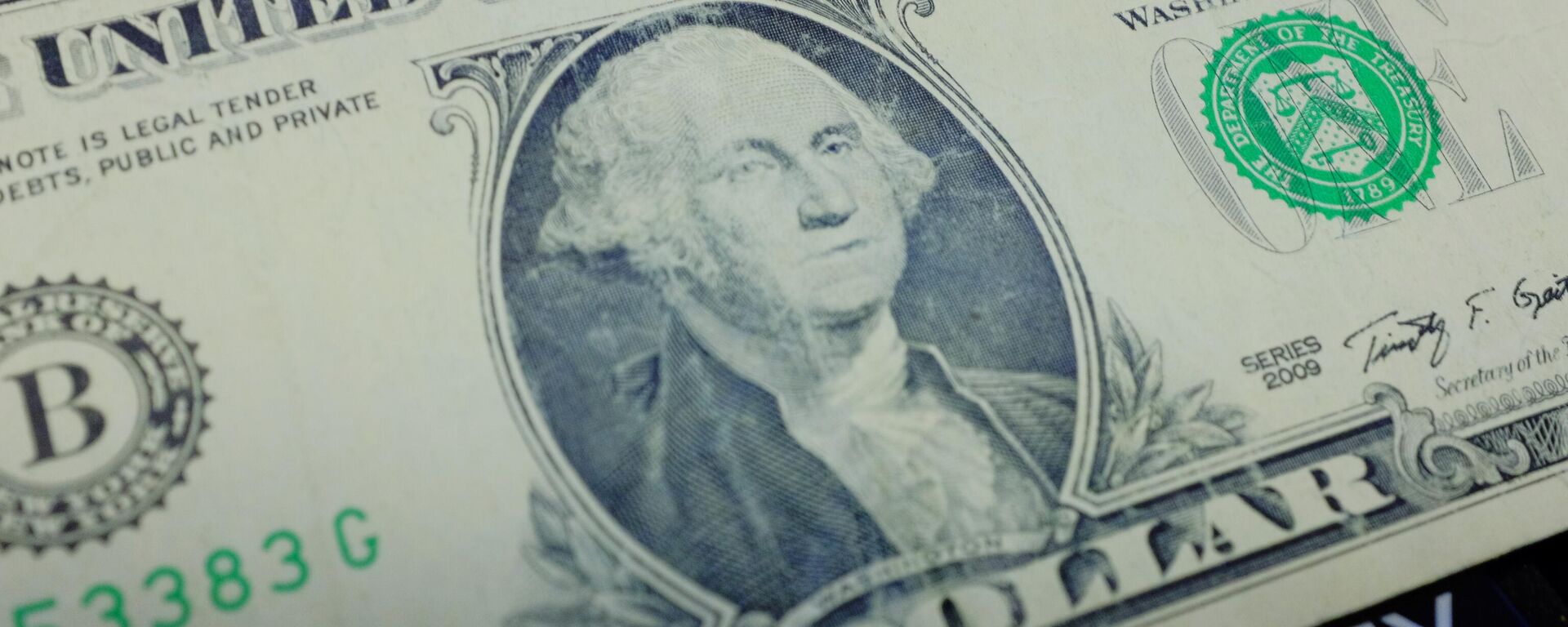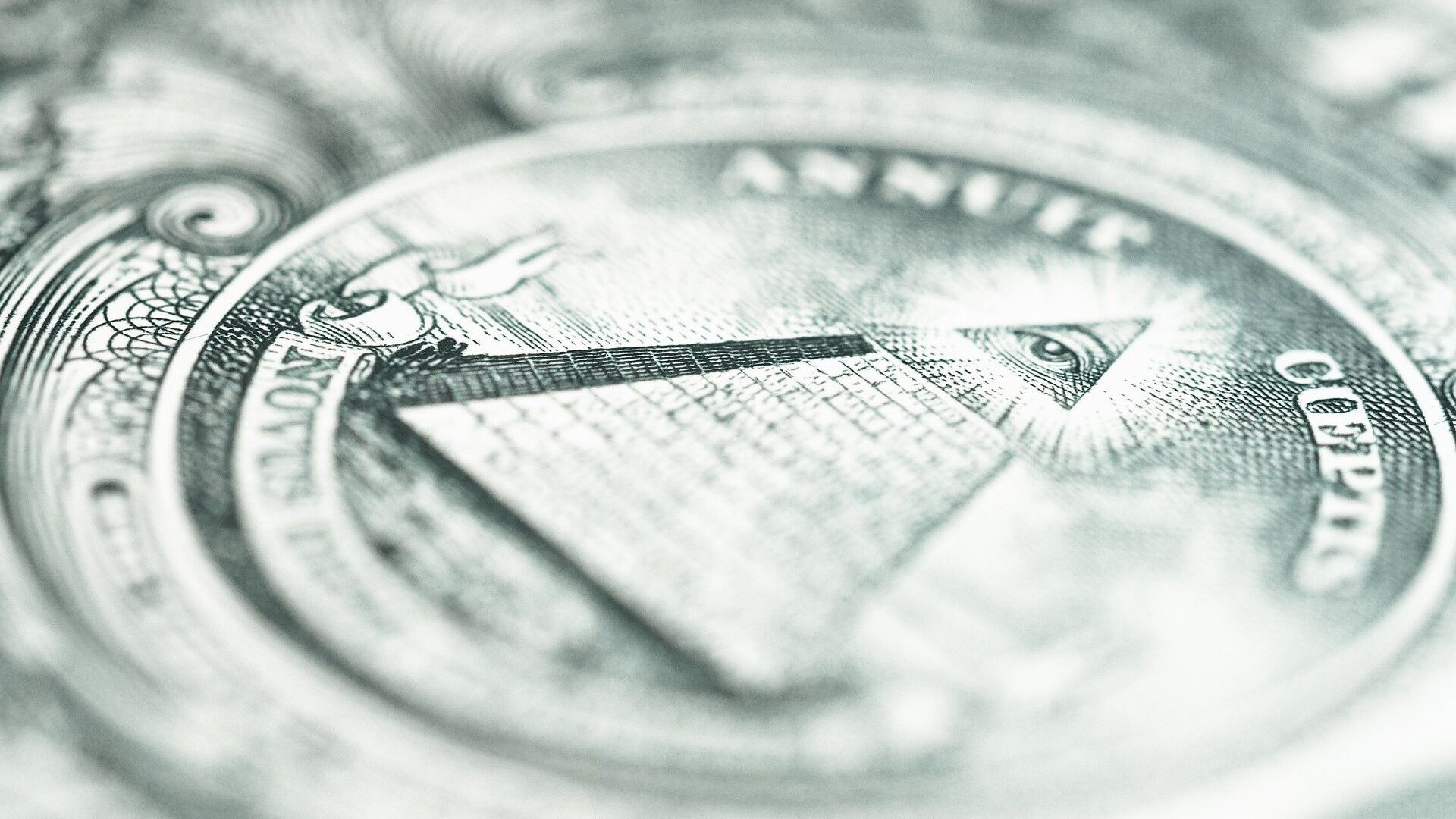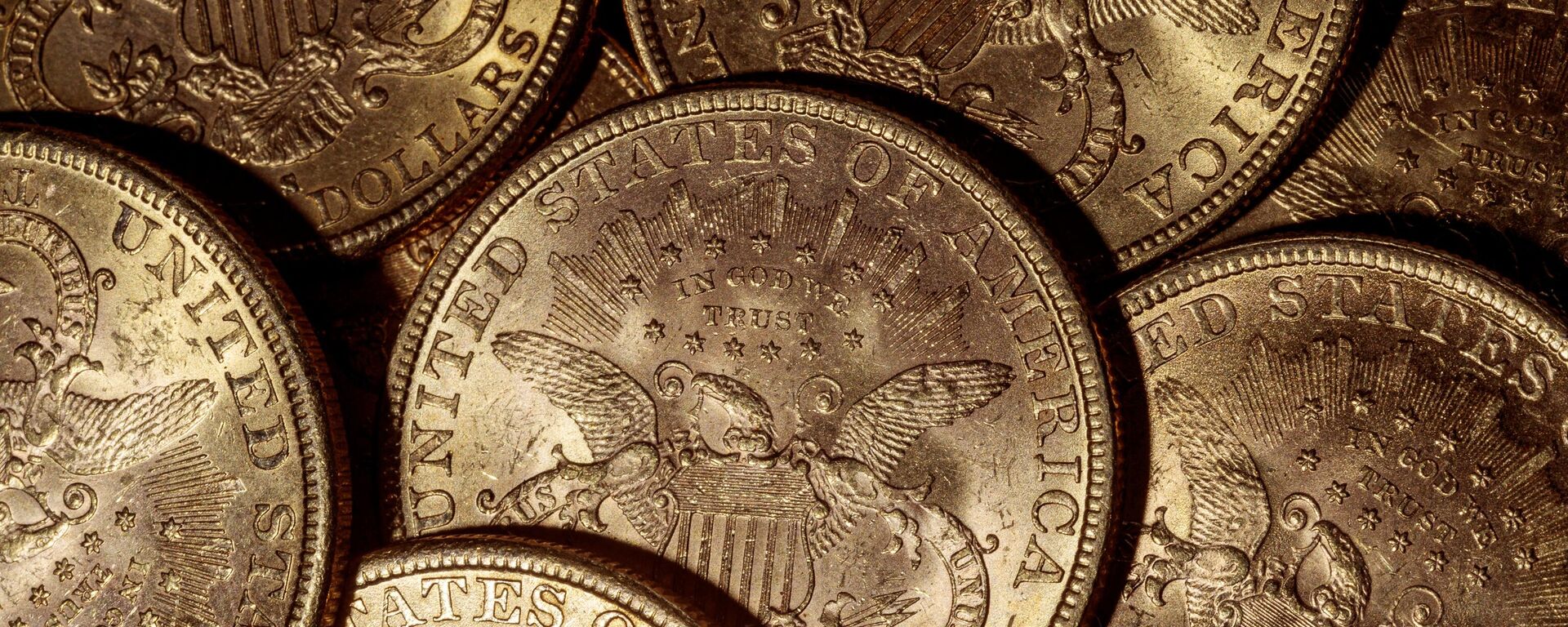https://sputnikglobe.com/20240102/dollars-battering-in-2023-just-the-start-as-brics-strives-for-dedollarization-1115951713.html
Dollar’s Battering in 2023 Just the Start as BRICS Strives for Dedollarization
Dollar’s Battering in 2023 Just the Start as BRICS Strives for Dedollarization
Sputnik International
2023 proved the dollar’s worst-performing year since the global economic downturn associated with the coronavirus in 2020, with the currency losing ground against alternatives across Europe and Asia. Sputnik asked a respected BRICS economist what happened, and what comes next.
2024-01-02T18:51+0000
2024-01-02T18:51+0000
2024-01-03T06:46+0000
economy
business
russia
south africa
brics
federal reserve
https://cdn1.img.sputnikglobe.com/img/106176/34/1061763420_0:180:1920:1260_1920x0_80_0_0_fa49b19ca1c6d09fea654c4f46584010.jpg
The dollar suffered a 2.7 percent decline against other major global currencies in 2023, battered by anticipation among speculators of a shift in Fed policy to cut interest rates and weaken global interest in dollar-denominated investments and debt as the US economy slows.The drop in the dollar’s value, the biggest of its kind since 2020, when the greenback declined 5.5 percent as Washington pumped trillions of new dollars into the economy, now comes amid the ongoing tectonic transformations in the contours of the global economy as the US attempts to use its currency as a means of economic pressure against geopolitical rivals.The West’s economic war against Russia, waged via sanctions and trade restrictions, sparked realization even among many of the US’s traditional allies that their economic relationships and financial well-being were inextricably linked to American goodwill which could disappear at any moment. This realization helped motivate half a dozen countries to join the BRICS bloc last year (Egypt, Ethiopia, Iran, Saudi Arabia, the UAE and Argentina), and prompted BRICS+ and other countries to accelerate a search for safe alternatives to the de facto global reserve currency.“The expansion of BRICS and the multi-currency order and move towards a ‘BRICS currency’ is certainly one core factor as the world trade [and] economic investment patterns are diversifying,” Patel said, referring to the currency concept discussed extensively ahead of the BRICS summit in South Africa, and floated again ahead of the upcoming summit in Kazan, Russia later this year.Whether through another nation’s currency or in the form of a new BRICS monetary unit, the prospective benefits of a stable alternative to the dollar as the hegemon of world trade for Global South countries cannot be overstated, the researcher says.Asked to go into more detail on what’s motivating investors’ expectations of the dollar continuing to lose ground as the Fed considers reversing course on its 21-month-long policy of increasing interest rates to try to tame inflation, the South African economist said stagnation of the US economy and “perhaps even a looming recession” are driving doubts. “When the Federal Reserve increases the federal funds rate, it typically increases interest rates throughout the economy, which tends to make the dollar stronger,” with investors abroad attracted by higher yields, Patel explained. By contrast, when interest rates fall, interest in dollar-denominated financial instruments diminishes. “Increases or decreases in the Fed funds rate have correlated fairly well with moves in the US dollar exchange rate versus other currencies,” the observer emphasized.
https://sputnikglobe.com/20231230/dollars-dismal-dive-worst-year-since-pandemic-as-pessimism-peaks-1115890398.html
https://sputnikglobe.com/20240102/the-american-century-is-over-us-faces-economic-turbulence-in-2024-1115878568.html
https://sputnikglobe.com/20230420/why-did-roosevelt-kill-the-gold-standard-1109668899.html
russia
south africa
Sputnik International
feedback@sputniknews.com
+74956456601
MIA „Rossiya Segodnya“
2024
News
en_EN
Sputnik International
feedback@sputniknews.com
+74956456601
MIA „Rossiya Segodnya“
Sputnik International
feedback@sputniknews.com
+74956456601
MIA „Rossiya Segodnya“
what threat do brics countries pose to dollar, what can topple the dollar, is dollar the main currency, how solid is us dollar, us dolar statistics
what threat do brics countries pose to dollar, what can topple the dollar, is dollar the main currency, how solid is us dollar, us dolar statistics
Dollar’s Battering in 2023 Just the Start as BRICS Strives for Dedollarization
Longread
2023 proved the dollar’s worst-performing year since the global economic downturn associated with the coronavirus in 2020, with the currency losing ground against alternatives across Europe and Asia. Sputnik asked a respected BRICS economist what happened, and what comes next.
The dollar suffered a
2.7 percent decline against other major global currencies in 2023, battered by anticipation among speculators of a shift in Fed policy to cut interest rates and weaken global interest in dollar-denominated investments and debt as the US economy slows.
The drop in the dollar’s value, the biggest of its kind since 2020, when the greenback declined 5.5 percent as Washington pumped trillions of new dollars into the economy, now comes amid the ongoing tectonic transformations in the contours of the global economy as the US attempts to use its currency as a means of economic pressure against geopolitical rivals.
The West’s economic war against Russia, waged via sanctions and trade restrictions, sparked realization even among many of the US’s traditional allies that their economic relationships and financial well-being were inextricably linked to American goodwill which could disappear at any moment. This realization helped motivate half a dozen countries to join the BRICS bloc last year (Egypt, Ethiopia, Iran, Saudi Arabia, the UAE and Argentina), and prompted BRICS+ and other countries to accelerate a search for safe alternatives to the de facto global reserve currency.

30 December 2023, 12:46 GMT
“The decline of the dollar is a long-term trend and phenomenon and we are only at the early inception phases of this process,” Ashraf Patel, a research associate with the Institute for Global Dialogue, a Pretoria, South Africa-based think tank, told Sputnik.
“The expansion of BRICS and the multi-currency order and move towards a ‘BRICS currency’ is certainly one core factor as the world trade [and] economic investment patterns are diversifying,” Patel said, referring to the currency concept
discussed extensively ahead of the BRICS summit in South Africa, and
floated again ahead of the upcoming summit in Kazan, Russia later this year.
Whether through another nation’s currency or in the form of a new BRICS monetary unit, the prospective benefits of a stable alternative to the dollar as the hegemon of world trade for Global South countries cannot be overstated, the researcher says.
Still, “advocates for dedollarization would need to show value such as cheaper trade costs and less volatility,” Patel stressed. “Dedollarization would of course mean less space for the US to use and abuse currencies of nations for political objectives, as has been their standard policy practice for decades,” he added, characterizing the process, which he estimates been underway since the global financial crisis of 2009, as one of “economic common sense” for other countries.

2 January 2024, 17:20 GMT
“Lessons from when the Gold Standard was ended in the 1970s is instructive and can provide insights on the pace and velocity of such a process, but the gates of dedollarization have now opened and generally a new global financial-economic and trade diversification is the new norm,” Patel said.
Asked to go into more detail on what’s motivating investors’ expectations of the dollar continuing to lose ground as the Fed considers reversing course on its 21-month-long policy of increasing interest rates to try to tame inflation, the South African economist said stagnation of the US economy and “perhaps even a looming recession” are driving doubts.
“When the Federal Reserve increases the federal funds rate, it typically increases interest rates throughout the economy, which tends to make the dollar stronger,” with investors abroad attracted by higher yields, Patel explained. By contrast, when interest rates fall, interest in dollar-denominated financial instruments diminishes. “Increases or decreases in the Fed funds rate have correlated fairly well with moves in the US dollar exchange rate versus other currencies,” the observer emphasized.





